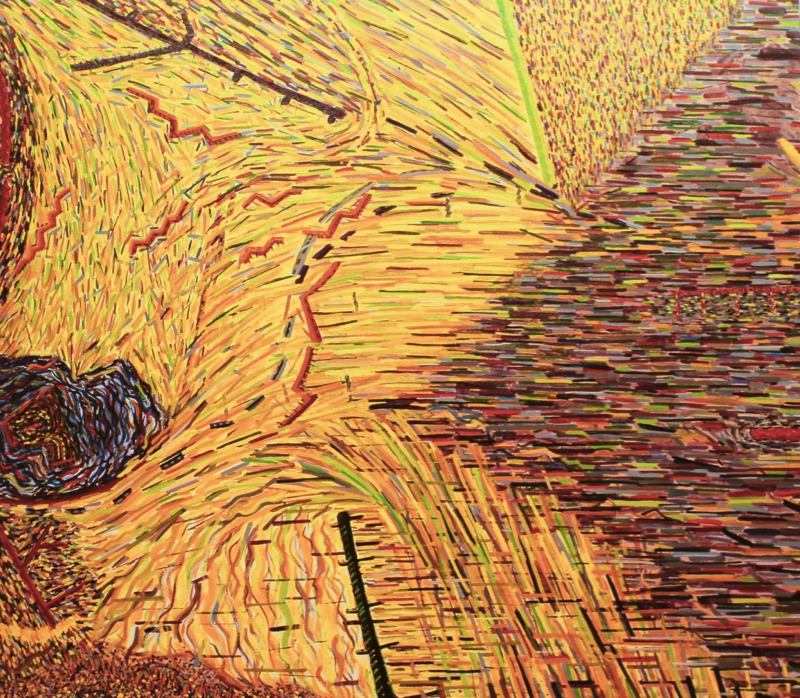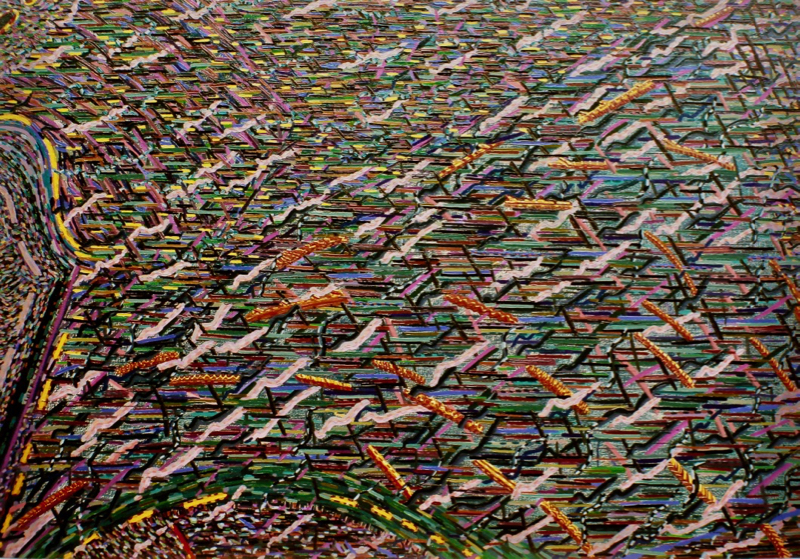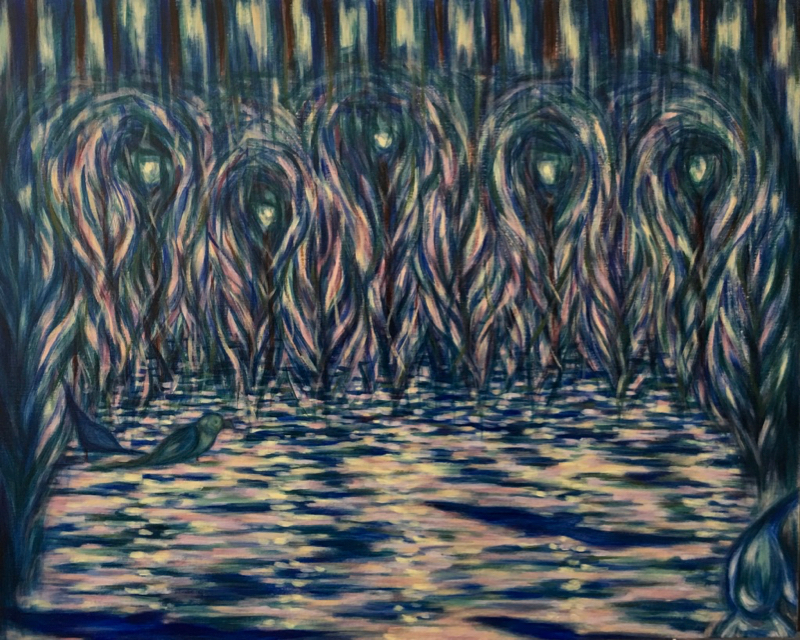My first paintings were small—often not more than 14" wide. I was working in a variety of mediums with prints, drawings, and paintings, so I chose a smaller format as a constant — it was a practical way to create a larger body of work.
When I started to paint exclusively, I moved upstairs to the painting department and had my own 12 foot square studio space. One of my mentors said "why don’t you scale these up in size — you might not get another chance to paint this large for a long time…"
For the remainder of my time at the Institute, I did just that. The tools of my trade were large brushes, lots of oil paints, and a step stool to stand on. I built my own stretchers in the wood shop. I stretched, primed, & gessoed my own canvas. I learned so much from my colleagues and reading Ralph Mayer’s The Artist’s Handbook (the bible). I also had to work totally differently— I could no longer sit but had to stand and walk back & forth just to see. And as my working method changed, my imagery evolved.
These, BeverlyRevisited ( 4’ x 6’), and Firefly ( 90" square) were a couple of my first smaller, large canvases.





